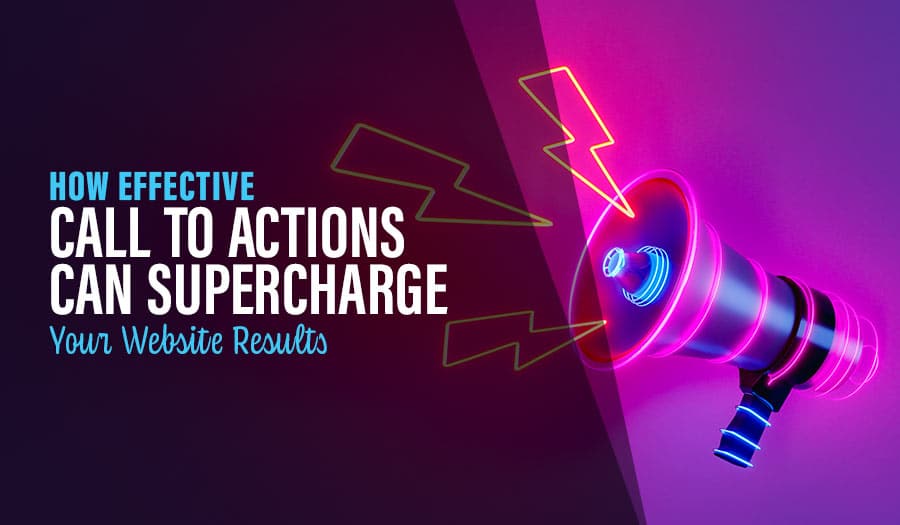Are you looking to turn your website visitors into active customers? The secret lies in your CTAs—calls to action that holds the power to catapult your conversion rates. In this guide, we’ll unveil “ how effective CTAs can supercharge your website” by motivating users to take the next step. Learn to create, place, and optimize CTAs that resonate with your audience and watch as they transform the conversion landscape of your digital presence.
Key Takeaways
- CTAs are pivotal for conversion rate optimization, guiding visitors towards taking action and directly influencing digital marketing results across various channels.
- Key components of crafting compelling CTAs include action-oriented language, eye-catching design, strategic placement, and personalization, each contributing to higher engagement and conversion rates.
- Regular A/B testing of CTAs is crucial for refining their effectiveness, while analysis of performance metrics provides insights for continuous optimization to boost conversions.
The Power of Effective CTAs in Boosting Conversions
Harnessing the power of a well-crafted call to action is like finding the golden key to a treasure chest of conversions. CTAs are the pivotal moments on your landing pages where visitors transition from interest to action, laying the groundwork for higher conversion rates. These are not just mere buttons or links; they are strategic tools in the arsenal of conversion rate optimization, channelling your visitors to the point where decision-making and purchasing become one.
The mastery of creating and implementing compelling CTAs can catapult your marketing efforts to new heights, achieving significantly higher conversion rates across email campaigns, social media engagement, and overall website interactions. It’s this profound influence on digital marketing results that positions CTAs as a cornerstone for driving conversions and enhancing user experience.
What is a CTA?
Consider a CTA the guiding hand that directs visitors through the labyrinth of your website, leading them towards desired actions such as subscribing to a newsletter, downloading a guide, or adding a product to their cart. These prompts are more than just instructions; they are crafted to tap into cognitive triggers and emotional responses, using strategies that not only influence decisions but also encourage actions that align with your cta strategy.
From the ubiquitous ‘Buy Now’ to the enticing ‘Download Free E-book,’ these CTAs are strategically sprinkled throughout your website, playing a crucial role in converting visitors into leads or customers. By understanding the essence of CTAs, you can begin to create compelling calls to action that resonate deeply with your audience.
Why CTAs Matter for Conversion Rates
CTAs are the engines that drive conversions by greasing the wheels of the user journey, delivering clear value propositions, and ensuring that every message is in perfect harmony with your landing pages. They are the critical juncture where interest is transformed into action, cutting through the noise to deliver a focused message that resonates with the visitor’s needs.
With consistent messaging, CTAs optimize the placement of the decision-making moment, significantly boosting conversion rates and making them an indispensable component of your conversion rate optimization efforts. It’s clear that to boost conversions, you must wield CTAs not just as tools, but as strategic weapons designed to motivate users and drive conversions.
Crafting Compelling CTAs: Key Components
Creating a compelling CTA is an art form that blends the science of psychology with the precision of design. The key components of a CTA – action-oriented language, eye-catching design, strategic placement, and personalization – must all work in concert to motivate users and boost conversion rates. A strong CTA captures attention with bold language and clear benefits, compelling the user to take action.
Visually, it must stand out on the page through color, size, or placement, using principles of visual hierarchy to guide the user’s gaze. But the true power lies in personalization. Some ways to achieve this are:
- Tailored messages that resonate with the individual user’s needs and desires
- Customized recommendations based on user behavior and preferences
- Dynamic content that changes based on user demographics or location
These personalized elements can dramatically increase engagement and conversions.
By mastering these key components, you can create compelling CTAs that not only capture attention but also drive action.
Action-Oriented Language
The language of your call to action cta can make or break its effectiveness. A call to action that uses concise and compelling language with a clear value proposition can significantly increase engagement. Starting with a strong verb creates a sense of immediacy, prompting the user to take immediate action. This urgency can be compelling; for instance, incorporating a sense of urgency in CTAs has been shown to result in an 11% increase in conversion rates.
By using compelling language that resonates with the user, a CTA can transform from a mere suggestion to a compelling command that drives desired action.
Design and Placement
The design and placement of a CTA are as critical as its message. Engaging visuals and strategic placement ensure that CTAs are not only seen but also acted upon. For instance, placing a CTA above the fold can lead to a 17% higher conversion rate, showcasing the importance of visibility and timing.
Moreover, the use of high-quality and scalable vector graphics (SVGs) ensures that CTAs maintain visual quality across devices, an essential factor for consistency and user engagement. By optimizing CTA placement and design, you set the stage for your call to action to perform its pivotal role in driving conversions.
Personalization and Relevance
Tailoring CTAs to address the unique needs, desires, or pain points of your target audience can lead to a dramatic uptick in user engagement and conversion rates. Personalization makes the user feel seen and understood, resulting in CTAs that are not just appealing, but irresistible, potentially leading to a 90% increase in conversions. The integration of AI with CTAs amplifies this effect by dynamically adapting to user behaviors and preferences, further boosting conversion rates.
In the pursuit of website optimization, personalized CTAs stand as a beacon on the landing page, guiding users on a journey that feels uniquely their own.
A/B Testing Your CTAs
A/B testing your CTAs is akin to conducting a scientific experiment — it’s an invaluable process for determining the most effective elements of your call to action. By comparing two or more versions of a web page, you can gather performance metrics that reveal which variation resonates best with your audience. This data-driven approach is a cornerstone of conversion rate optimization efforts, ensuring that every tweak and adjustment to your CTA is informed by real user responses.
Whether it’s the color, copy, or position, A/B testing sheds light on the nuances that can make all the difference in boosting conversion rates.
The Importance of A/B Testing
The significance of A/B testing cannot be overstated. It’s a key strategy that enables you to compare different CTA versions and pinpoint the most effective one. The process involves setting clear goals, creating variations, and analyzing the results to determine which CTA yields better performance.
Further, the use of AI in A/B testing can predict the potential performance of CTA variations, helping you choose the most promising options with greater confidence. A/B testing plays a significant role in fine-tuning your CTAs, making them more compelling and, ultimately, more successful.
Implementing A/B Tests on a landing page
To effectively implement A/B tests, you must:
- Isolate variables and test variations with a segmented audience to gather reliable data on performance metrics like click-through rates and conversion rates.
- Avoid testing with too small an audience; a sufficiently large user base is necessary to draw accurate conclusions.
- Look for significant performance differences, aiming for at least a 10% increase when dealing with small to medium-sized user bases to ensure meaningful results.
By systematically implementing A/B tests, you can make informed decisions that enhance the effectiveness of your CTAs.
Analyzing Test Results of user behavior
After conducting A/B tests, analyzing the results is a critical step in the ongoing process of optimizing your CTAs. Continuous refinement, driven by data analysis, ensures that your CTAs remain effective and adapt to changing user behaviors and market trends. Proper tracking and evaluation of metrics like Click-through rates and conversion rates are essential for gauging the effectiveness of CTAs, guiding you like a compass to navigate the vast seas of website optimization.
By interpreting the results from A/B tests, you can make continuous improvements, ultimately enhancing your website’s conversion rate and overall conversion rates.
Combining CTAs with Other Conversion-Boosting Strategies
While CTAs are powerful in their own right, combining them with other conversion-boosting strategies can create an unstoppable force that propels website results to new heights. Enhancing user experience, leveraging social proof, and utilizing exit-intent pop-ups can all work synergistically with CTAs to encourage conversions and maximize website conversions.
By integrating these strategies with compelling CTAs, you can create a cohesive user experience that not only captures visitors’ attention but also motivates them to take action.
Improving User Experience
A seamless user experience is the bedrock upon which successful CTAs are built. Understanding human psychology and visual design principles allows you to craft a user journey that feels intuitive and satisfying. The five key elements of UX design — strategy, scope, structure, skeleton, and surface — all contribute to creating a user experience that captivates and guides website visitors.
Clear and concise headlines, interactive product tours, and fast website load speeds all play a role in reducing visitor frustration and enhancing the likelihood of conversion. By prioritizing a user-centric approach, you set the stage for CTAs to perform at their best, leading to improved brand loyalty and increased site visits.
Leveraging Social Proof
Social proof is an influential factor in the decision-making process, harnessing the power of conformity to build trust and credibility with potential buyers. Customer testimonials, as a form of social proof, demonstrate the trust previous customers have in a product or service, easing uncertainties and encouraging purchase decisions. When visitors see how others have benefited from a product or service, they are more likely to proceed with actions such as purchases themselves, enhancing website conversions through the validation of others’ experiences.
By leveraging social proof on your website, you can reinforce the persuasive power of your CTAs and convert more website visitors into paying customers.
Utilizing Exit-Intent Pop-Ups
Exit-intent pop-ups serve as a strategic tool to recapture the attention of visitors who might otherwise leave your site without taking action. Personalized exit-intent pop-ups can provide a last-minute incentive that leads to an increase in lead conversion rates by 10–20%. Whether offering a discount for newsletter sign-ups or promoting exclusive content, these pop-ups give users a compelling reason to reconsider their decision to exit, thereby boosting lead conversion rates.
Incorporating well-designed exit-intent pop-ups into your website optimization strategy can complement your CTAs and ensure no potential conversion is lost.
Mobile Optimization for CTAs
In today’s mobile-first world, optimizing CTAs for mobile users is non-negotiable. A seamless user experience across devices, featuring responsive design and touch-friendly buttons, is essential for engaging the growing number of mobile users and boosting conversion rates. Customizing CTAs for mobile devices by considering the unique behaviors and constraints of mobile browsing ensures that every interaction is as effective as it would be on a desktop.
Mobile optimization of CTAs is not just a box to check; it’s a critical component of a holistic conversion rate optimization strategy that caters to the preferences and behaviors of mobile users.
Responsive Design
Responsive design is a cornerstone of mobile optimization, ensuring that your CTAs seamlessly adapt to various screen sizes and device types. A responsive CTA must maintain clarity and functionality without being overwhelmed by text or design elements, regardless of the device it’s viewed on. Background images must scale effectively, and the CTA should remain legible and visually appealing on every screen. By rigorously testing responsiveness across devices, you can guarantee that your CTAs are not only visible but also compelling for all mobile users.
This attention to detail not only attracts more visitors but also significantly enhances the user experience, making your digital marketing efforts more effective.
Touch-Friendly Buttons
Creating a touch-friendly environment for mobile users is about understanding the ergonomics of handheld devices. CTAs designed with large, tappable buttons accommodate the expectations of users navigating with their thumbs, ensuring a frustration-free experience that encourages action. The implementation of these user-friendly features is an acknowledgment of the pain points mobile users often face.
By addressing these challenges, you can enhance user engagement, leading to higher conversions from those who prefer to browse, shop, and interact on their mobile devices.
Analyzing and Optimizing Your CTAs for your target audience
The journey to perfecting your CTAs doesn’t end with implementation; it’s a cycle of constant analysis and optimization. Monitoring key metrics such as click-through rates and conversion rates provides valuable insights into user behavior, allowing for data-driven improvements. Tools like Google Analytics and heatmaps offer a window into how visitors interact with your CTAs, enabling you to fine-tune elements to better capture visitors’ attention and encourage conversions.
By committing to regularly analyzing and optimizing your CTAs, you can boost conversions and ensure that your marketing strategies are as effective as they can be.
Key Metrics to Monitor
To truly understand the impact of your CTAs, you need to monitor a suite of key metrics. Some of the metrics you should track include:
- Conversion rates: a prime indicator of CTA performance, revealing the efficacy of changes and guiding optimization efforts.
- Click-through rates: offer a comprehensive view of how compelling your CTAs are.
- Overall engagement levels: provide insight into how well your CTAs are resonating with your audience.
- Bounce rates: offer insight into visitor retention on individual pages.
- Revenue generated from CTA clicks: quantifies the success of your CTAs in concrete terms.
By tracking these metrics, you can gain valuable insights into the performance of your CTAs and make data-driven decisions to optimize them.
By keeping a close eye on these metrics, you can continually refine your CTAs to better serve your target audience and drive conversions.
Tools and Techniques for Analysis
Leveraging the right tools and techniques, which involves analyzing user behavior, is crucial for the in-depth analysis of your CTAs. Google Analytics, especially its latest iteration, Google Analytics 4, provides a comprehensive look at website traffic and conversion rate, enhanced by machine learning for advanced audience segmentation. Heatmaps, another powerful tool, visually represent user engagement, highlighting areas where CTAs are most and least effective.
Additionally, Google Looker Studio, when integrated with Google Analytics, enables real-time reporting on CTA performance, making it easier to compare metrics over different timeframes and draw actionable insights. With these tools at your disposal, you can analyze user behavior, refine your marketing strategies, and optimize your CTAs for peak performance.
Summary
As we wrap up our exploration of effective CTAs, it’s clear that they are far more than simple buttons on a page. They are the catalysts for action, the drivers of conversion, and the key to unlocking the full potential of your website. By crafting CTAs with compelling language, eye-catching design, and personalized messages, and continually testing and optimizing them, you can create an irresistible call to action that resonates with your audience. Combine this with strategies like improving user experience, leveraging social proof, and ensuring mobile optimization, and you have a recipe for success. Let this knowledge empower you to craft CTAs that not only stand out but also stand for something—a clear path for your visitors to become loyal customers.
Frequently Asked Questions
How many CTAs should be on one page for website visitors?
For a page geared towards a single action or offer and not requiring information from another page, one CTA is sufficient to avoid overwhelming the visitor with choices. Multiple CTA buttons can exist, but they should essentially perform the same function.
Do personalized CTAs convert 42% more visitors into leads than untargeted CTAs?
Yes, personalized CTAs can convert 42% more visitors into leads than untargeted CTAs. The use of a strong, personalized message can also increase conversion rates by over 202%.
What makes a CTA effective?
An effective CTA is characterized by compelling language, eye-catching design, strategic placement, personalized messages, and clear value to the user. It should encourage immediate action and resonate with the target audience.
How does A/B testing improve CTAs?
A/B testing improves CTAs by allowing you to compare different versions and make data-driven decisions to refine them for higher conversion rates. Testing elements like language, color, and placement helps in identifying the best-performing CTA.
What are the key metrics to monitor when analyzing CTAs?
The key metrics to monitor when analyzing CTAs are conversion rates, click-through rates (CTR), engagement levels, and bounce rates. These metrics provide valuable insights into the effectiveness of your CTAs and highlight areas for improvement.
Take your business to the next level with a Pixel Fish Website.
Check out some of our latest Website Design projects.
View some case studies of our website design work:
Finvu
Smooth Current Electrical and Solar
Beautiful Group of Trades
Caplock
Further Information
Why you should use Elementor for your new WordPress Website
Top 10 Tips to Create The Perfect Website Call to Action
15 Unbeatable SEO Tips for WooCommerce
Create the Perfect Call to Action on Your Homepage
Practical Design Website Tips for a Successful Online Presence
How do Call To Actions generate leads?



